Fine, thin hair doesn’t have to be a styling challenge it can be your secret weapon for chic, head-turning looks. As someone who’s spent years working with various hair textures, I’ve discovered that thin hair can actually hold certain styles better than thicker manes, giving you versatility that many would envy. The key is knowing which cuts and styling techniques create the illusion of fullness while working with your natural texture, not against it.
I’ve gathered 25 of the most flattering and on-trend hairstyles specifically designed to make thin hair look amazing. These styles range from short pixie cuts to shoulder-length bobs and even some longer options, all carefully chosen to add volume where you need it most. Some require minimal styling, while others might need a few extra minutes with your styling tools, but each one will transform your fine strands into something extraordinary.
1. Textured Pixie Cut
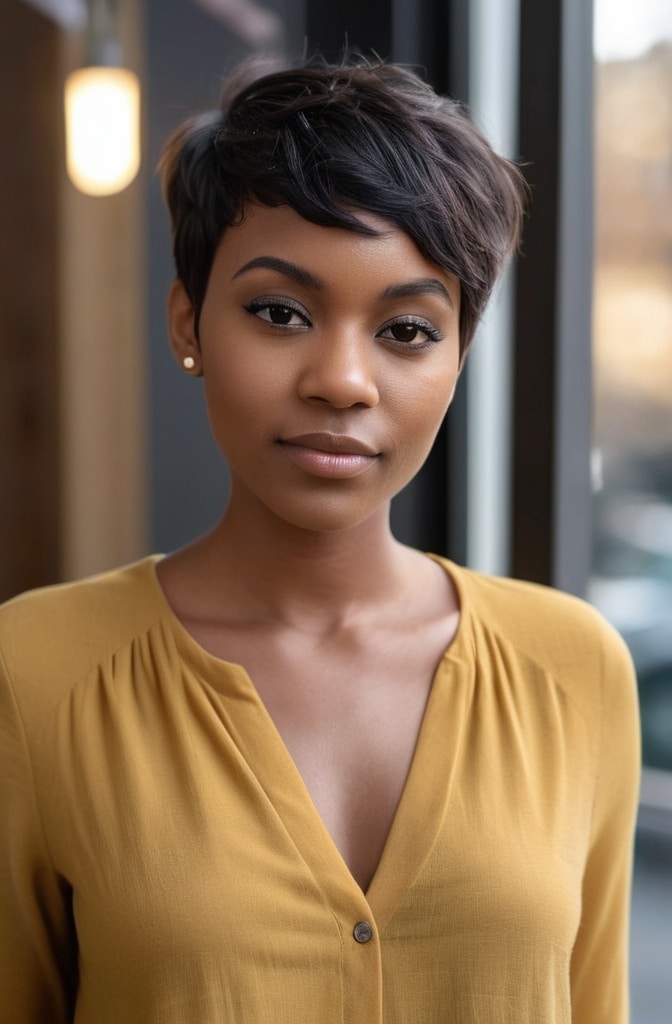
The textured pixie remains a timeless choice for those with fine hair who aren’t afraid to go short. This style works wonders because the shorter layers on top create natural volume, while the textured finish gives the illusion of thicker hair. I’ve seen this cut absalutely transform my clients’ confidence, especially when styled with a lightweight texturizing paste for that perfect “messy on purpose” vibe.
Short doesn’t have to mean boring, and with this pixie, you can play with different styling options depending on your mood. Add some subtle highlights or lowlights to create dimension that makes hair appear thicker. Trust me when I say this is one of those cuts that requires minimal styling but delivers maximum impact.
2. Blunt Bob with Subtle Layers

The blunt bob sits at that perfect sweet spot between classic and contemporary, making it a fantastic option for thin hair. The straight-across cutting technique creates the appearance of thickness at the ends, while subtle, invisible layers prevent the style from falling flat. This is definately one of my go-to recommendations for clients wanting a polished look that also adds volume.
When styled with a round brush and blow dryer, this bob takes on a gorgeous shape that swings beautifully with movement. For extra volume, try applying a mousse to damp hair before blow-drying and finish with a light-hold hairspray that won’t weigh down your strands.
3. Shoulder-Length Shag

The modern shag has made a massive comeback, and it’s particularly flattering for thin hair types. This cut incorporates layers of varying lengths to create natural texture and movement that gives the illusion of fuller hair. The choppy ends and face-framing layers work together to add dimension that fine hair often lacks.
What makes this style so appealing is its versatility wear it smooth for a more polished look or embrace its natural texture for an effortless vibe. Adding a sea salt spray to damp hair and scrunching will enhance the layers and create that coveted lived-in texture that’s so on-trend right now.
4. Curtain Bangs with Long Layers
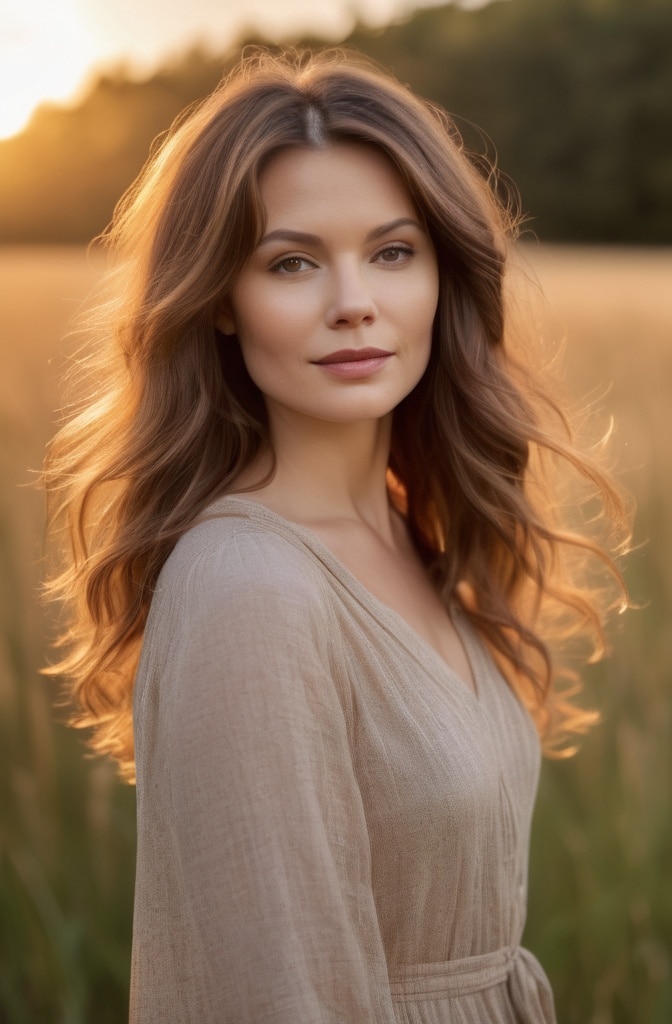
Curtain bangs have become increasingly popular, and they work beautifully for thin hair when paired with long layers. The swept-open style of these bangs adds volume at the crown while drawing attention to your eyes and cheekbones. I’ve noticed that many of my clients with fine hair find this style particulary flattering because it creates the illusion of thickness around the face.
The longer layers throughout maintain length while removing bulk that could weigh down thin hair. This is a perfect style for those who aren’t ready to commit to shorter cuts but still want the benefits of strategic layering for added volume and movement.
5. French Bob

The French bob—hitting just at chin length with subtle texture and optional bangs—is having a major moment. This chic, shorter bob works extremely well for thin hair because the single-length cut creates a strong, volumized look that makes hair appear thicker. The slightly undone finish gives it that effortless Parisian vibe that everyone covets.
Styling is minimal, which is another bonus for fine hair that can get weighed down by too many products. A light mist of texturizing spray and a quick tousle with your fingers is all you need. Try leaving your ends slightly uneven for that authentic French-girl charm thats impossibly cool.
6. Layered Lob with Side Part

The layered lob (long bob) hitting just below the shoulders with a deep side part creates instant volume for thin hair. This length is incredibly versatile, allowing for various styling options while the strategic layers add movement and body. The side part is key here it creates lift at the root and prevents hair from lying too flat against the head.
When blow-dried with a round brush, this cut takes on a beautiful shape with natural volume. What I love about this style is how it can be dressed up for special occasions or left more casual for everyday wear. The layered lob truly strikes that perfect balance between manageability and style.
7. Micro Bob

Ultra-short and precisely cut, the micro bob makes a bold statement while creating the appearance of thicker hair. This cropped style hitting just below the ears is edgy yet sophisticated, with its clean lines creating structure that fine hair often lacks. The blunt cutting technique ensures that every strand contributes to the overall fullness.
This geometric cut works best when styled sleek and straight to showcase its architectural quality. A flat iron and a tiny amount of smoothing serum are all you need to achieve the perfect micro bob look. The shorter length means less weight pulling down your strands, which naturally creates more volume.
8. Layered Pixie-Bob Hybrid

The pixie-bob hybrid combines the best elements of both styles the volume of a pixie with the versatility of a bob. With shorter layers at the crown and slightly longer pieces framing the face, this cut creates natural lift and movement that’s ideal for thin hair. The varied lengths throughout add dimension that makes hair look thicker instantly.
I’ve found this style to be especially popular among my clients who want a low-maintenance cut that still looks intentional and stylish. Try using a lightweight volumizing foam on damp hair, then blow-drying with fingers for a tousled finish thats both effortless and polished.
9. Asymmetrical Bob

The asymmetrical bob, with one side slightly longer than the other, creates visual interest while making thin hair appear fuller. This geometric cut draws attention to its unique shape rather than to the texture of the hair, making it an excellent choice for those with fine strands. The slight angle creates movement that boring, one-length cuts often lack.
What makes this style particularly effective is how it concentrates volume where you want it most. The shorter side adds height and fullness, while the longer side maintains some length and versatility. This is definately a statement cut that requires minimal styling to look intentional and chic.
10. Blunt Midi Cut with Curtain Bangs
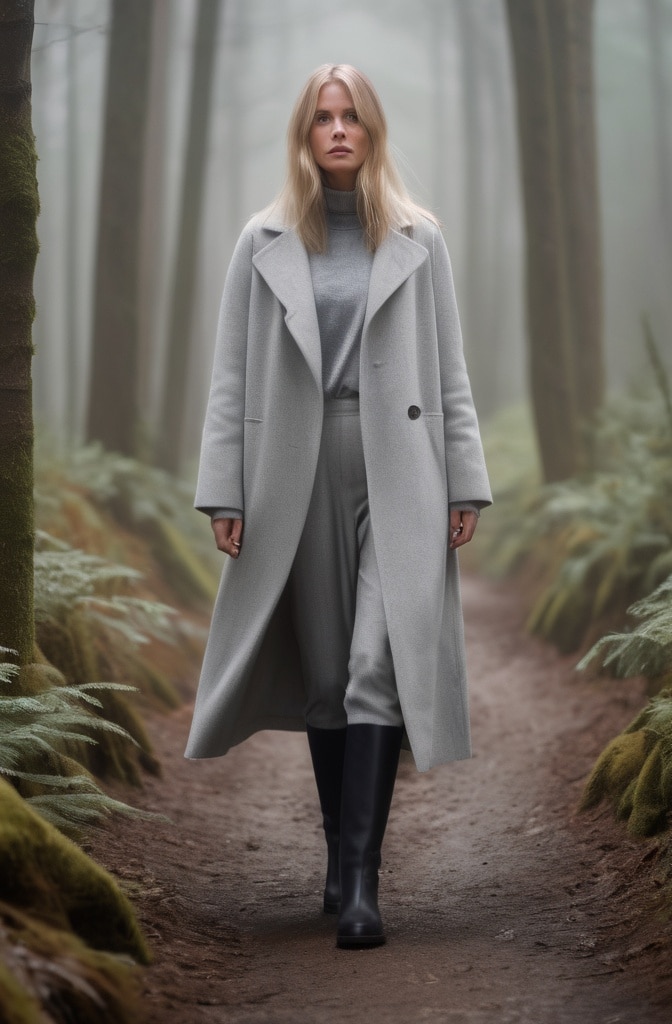
The midi cut falling between a bob and long hair paired with curtain bangs creates a sophisticated look that works beautifully for thin hair. The blunt ends create the appearance of thickness, while the face-framing curtain bangs add volume where it’s most noticeable. This combination strikes the perfect balance between length and body.
When styled with a round brush to create slight movement at the ends, this cut has a beautiful, soft quality that’s both modern and timeless. The midi length is also versatile enough for various styling options, from sleek and straight to gentle waves. It’s a cut that grows out gracefully, too, which means fewer trips to the salon.
11. Wolf Cut

The wolf cut a modern hybrid of a shag and mullet has taken social media by storm, and it works surprisingly well for thin hair. The heavy layering creates natural volume and texture, particularly around the crown and face, while the wispy ends prevent the style from looking too heavy. This is one of those cuts that actually looks better on finer hair textures.
The beauty of this style is in its organized chaos it’s meant to look slightly undone and effortless. To style, apply a texturizing product to damp hair and either air dry or diffuse for added volume. The wolf cut embraces your hairs natural movement, making it a great option for those who prefer a wash-and-go approach.
12. Choppy Pixie with Long Bangs

The choppy pixie with longer bangs offers the volumizing benefits of short hair while maintaining some length to play with. The textured, piece-y layers throughout create dimension that makes thin hair look instantly thicker, while the longer bangs add versatility to the style. This is the perfect option for someone wanting to go short without sacrificing styling options.
I love recommending this cut to clients who are nervous about going too short too quickly the longer bangs can be pinned back, swept to the side, or styled forward depending on your mood. Use a texturizing paste or clay to emphasize the choppy layers and create that desirable lived-in look thats so popular now.
13. One-Length Bob with Internal Layers

The one-length bob with hidden internal layers is a genius option for thin hair. From the outside, it appears to be a sleek, blunt cut that creates the illusion of thickness at the ends. However, the invisible internal layers add movement and volume without compromising the strong outline of the haircut. This technique is a stylists secret weapon for fine hair.
When blow-dried with a round brush, the internal layers create natural lift and body that makes hair appear significantly fuller. The beauty of this cut lies in its versatility—it can be worn sleek for a more polished look or tousled for a casual, lived-in vibe. Either way, it maintains that coveted appearance of thicker, fuller hair.
14. Bixie Cut

The “bixie” a hybrid between a bob and a pixie—has emerged as one of the most flattering options for thin hair. Longer than a traditional pixie but shorter than a bob, this style incorporates plenty of layers and texture to create volume and movement. The varied lengths throughout prevent fine hair from falling flat while adding a modern, edgy vibe.
This cut works particulary well because it concentrates volume at the crown where thin hair needs it most. For styling, a volumizing mousse applied to damp roots followed by blow-drying with fingers lifted away from the scalp will maximize the fullness this cut naturally creates.
15. Curly Shag for Fine Curls

Even fine hair can be naturally curly, and the curly shag is perfect for maximizing volume in fine curly textures. The layered approach works with your natural curl pattern to create height and fullness, particularly around the crown and face. This cut embraces and enhances natural texture rather than fighting against it.
Styling is minimal simply apply a lightweight curl cream to damp hair and either air dry or diffuse on a low setting. Avoid heavy products that could weigh down fine curls. The beauty of this style is how it makes the most of what you naturally have, creating the appearance of thicker, more voluminous curls.
16. ’90s-Inspired Rachel Cut

The iconic layered cut made famous by Jennifer Aniston in “Friends” has made a major comeback, and it’s incredibly flattering for thin hair. The face-framing layers and distinctive shape create movement and volume that fine hair often lacks. This nostalgic style has been updated with a modern twist that makes it relevant for today.
What makes this cut work so well is how the layers are distributed—concentrated around the face and crown to add height where it’s needed most. For authentic ’90s vibes, style with a round brush turning the ends under slightly, or use a large-barrel curling iron for those signature flipped-out sections.
17. Feathered Mid-Length Cut

Feathered layers where the ends of each layer are cut at an angle to create a soft, wispy effect—are a game-changer for thin hair. This technique adds natural movement and volume without removing too much weight. The mid-length keeps some versatility while the feathered ends prevent the hair from looking stringy or flat.
The graduated layers throughout create dimension that makes hair appear thicker, especially when styled with a round brush to enhance the feathered effect. I’ve noticed that many of my clients with fine hair find this style particularly flattering because it creates softness around the face while maintaining an overall polished look.
18. Textured Crop with Side-Swept Bangs

For those ready to embrace a shorter length, the textured crop with side-swept bangs offers maximum volume with minimal styling. The textured layers throughout create natural lift at the roots, while the longer bangs add versatility and softness to the style. This cut is especially flattering for thin hair because it creates the illusion of thickness through careful layering.
The side-swept bangs draw attention to your eyes and cheekbones rather than to the texture of your hair. To style, apply a small amount of texturizing paste to dry hair, focusing on creating piece-y definition throughout. This low-maintenance cut works with your natural hair pattern rather then forcing it into submission.
19. Collarbone-Length Cut with Face-Framing Layers

This versatile cut hits at that perfect spot just at the collarbone, with carefully placed layers around the face to add volume where it’s most visible. The length is ideal for thin hair because it’s not so long that it weighs the hair down, yet long enough to allow for various styling options. The face-framing layers create movement that makes hair appear thicker.
When styled with loose waves, this cut takes on beautiful dimension that fine hair often lacks. I recommend using a 1-inch curling wand on alternate sections, leaving the ends out for a more modern, relaxed look. This cut works well for both professional settings and casual occasions, making it incredibly versatile.
20. Wispy Bangs with Long Layers

Adding wispy, see-through bangs to a long-layered cut creates the illusion of fullness around the face without removing too much weight from the rest of the hair. These light, airy bangs add dimension to thin hair while the long layers throughout create movement and prevent the style from falling flat. It’s a subtle change that makes a significant impact.
The key to making this style work is keeping the bangs light and piece-y rather than heavy and blunt. When combined with face-framing layers, these bangs create a beautiful frame for your features while adding the appearance of volume. This is a great option for those who want to maintain length while adding some interest to their style.
21. Blunt Midi Cut with Money Piece Highlights
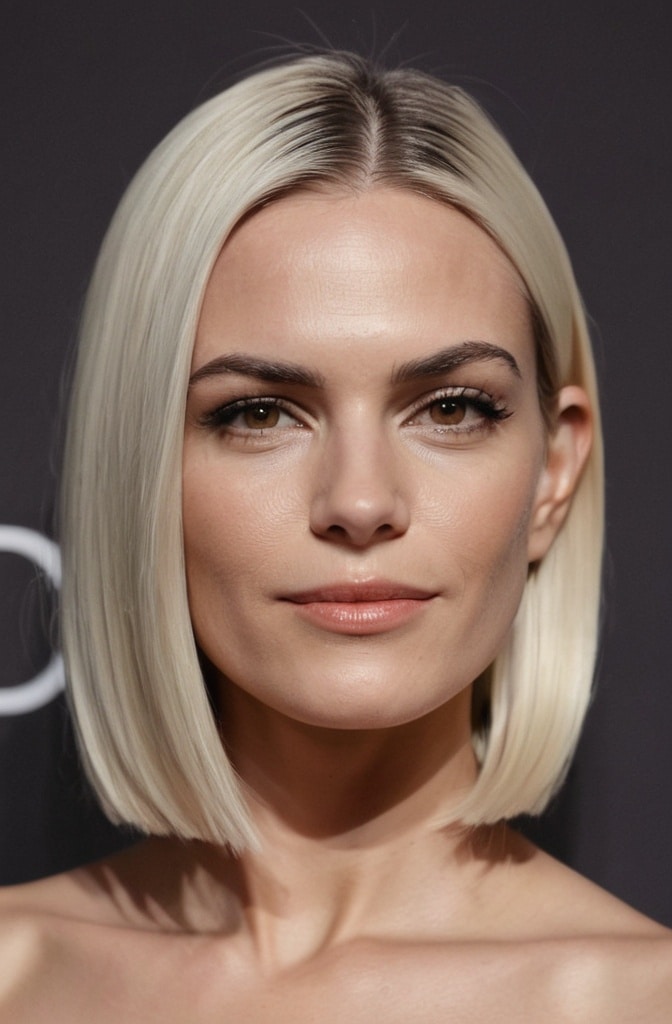
The combination of a blunt, one-length cut at midi length with face-framing “money piece” highlights creates both the appearance of thickness and dimension. The single-length cut makes ends appear thicker, while the strategic highlighting around the face adds depth that makes thin hair look more voluminous. This technique uses both cut and color to maximize the appearance of fullness.
I’ve seen this style completely transform fine, thin hair by creating the illusion of thickness through optical tricks. The bold face-framing highlights draw attention to the movement around the face rather than to the overall thickness of the hair. Style with a flat iron for a sleek finish or add gentle waves for more casual vibes.
22. Heatless Curl Methods for Volume

While not technically a cut, heatless curling methods deserve mention because they can add significant volume to thin hair without damage. Techniques like rag curls, silk scrunchie curls, or ribbon curling methods create lasting volume and texture that make thin hair appear much fuller. These methods have gained popularity for good reason—they work amazingly well.
The overnight setting allows the hair to cool completely in the curled position, creating longer-lasting volume than heat styling typically provides. For thin hair, this means bounce and body that can last multiple days. Apply a lightweight mousse before setting for even better results that won’t weigh down fine strands.
23. Undercut Bob

The undercut bob features a hidden undercut section at the nape of the neck, removing bulk where thin hair often appears stringy while maintaining volume on top. This clever cutting technique redistributes the weight of the hair to create more volume where it’s visible while removing it where it’s not needed. It’s a modern approach that works particulary well for straight, fine hair.
The beauty of this cut is that the undercut remains hidden when hair is worn down, but creates an interesting detail when hair is pulled back. This strategic removal of weight allows the remaining hair to appear fuller and more voluminous. For those with very fine hair, this technique can be a game-changer.
24. Modern Bowl Cut
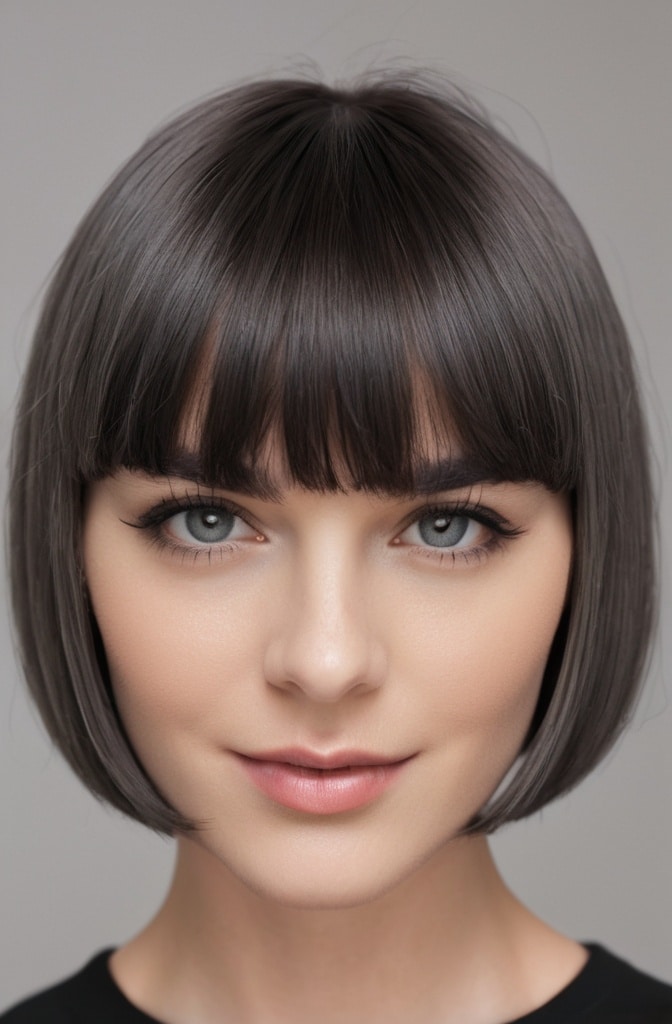
The modern interpretation of the bowl cut has evolved into a sophisticated, textured style that works beautifully for thin hair. Far from the rigid cuts of the past, today’s version incorporates texture and soft edges to create a contemporary look that adds volume through precise cutting techniques. The structured shape creates the appearance of thickness that fine hair often lacks.
This geometric cut relies on strong lines to create impact, drawing attention to the cut itself rather than to the texture of the hair. When styled with a light texturizing product, this cut takes on an editorial quality that’s both fashion-forward and flattering. It’s definately a statement style for those ready to embrace a bold, modern look.
25. Soft Undercut Pixie
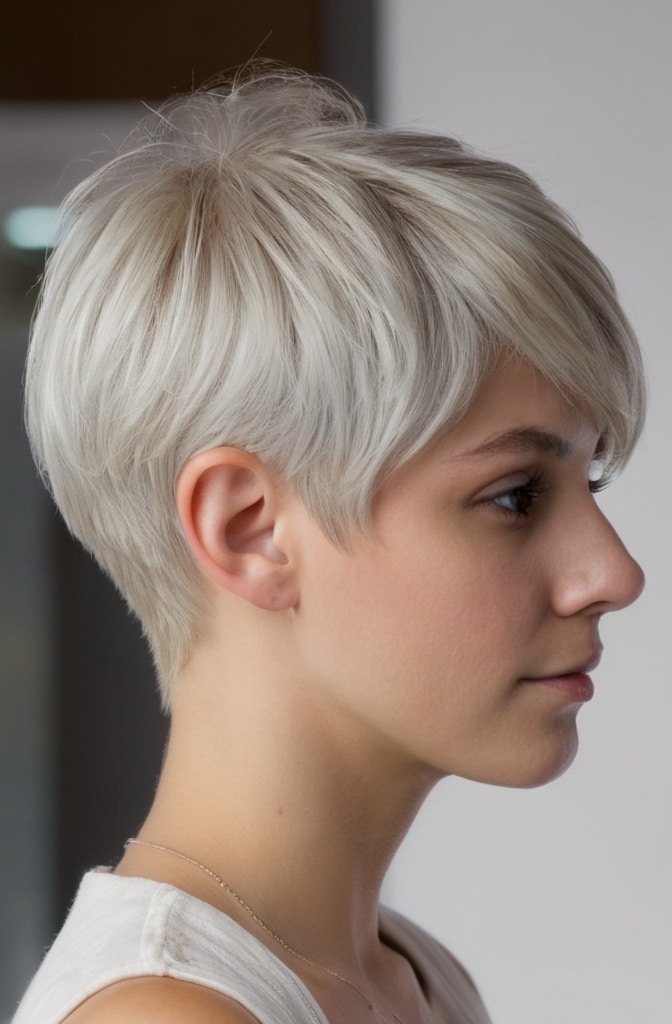
The soft undercut pixie features longer lengths on top with a subtly undercut back and sides, creating dramatic volume contrast that makes thin hair look much fuller. The longer pieces on top can be styled in various ways swept back, to the side, or forward providing versatility despite the shorter length. This cut is the perfect balance of edgy and feminine.
I love recommending this style to clients with thin hair who want a low-maintenance cut that still makes a statement. The undercut sections reduce bulk where it’s not needed, while the longer top creates the illusion of thickness through contrast. Style with a root-lifting spray and blow dry using fingers for the perfect tousled finish.
When working with thin hair, remember that the right cut can make all the difference. These 25 styles are designed specifically to enhance fine strands, creating the appearance of thickness through strategic cutting techniques, layering, and styling. The key is finding the style that works with your natural texture and lifestyle, allowing you to embrace your thin hair rather than fighting against it.
26. Sliced Bob

The sliced bob uses a special cutting technique where the ends are “sliced” rather than bluntly cut, creating movement without removing too much weight. This approach gives thin hair a lightweight, airy quality while maintaining the strength of the overall shape. I’ve seen this style work wonders for clients whose fine hair tends to fall flat with traditional blunt cuts.
What makes this technique so effective is how it removes bulk without sacrificing the appearance of thickness. The sliced ends move beautifully with even the slightest breeze, creating a dynamic look that’s both sophisticated and playful. Pair with a root-lifting spray for maximum volume that lasts all day.
27. Butterfly Cut

The butterfly cut has emerged as one of the most flattering options for thin hair, featuring face-framing layers that cascade like butterfly wings. This ’70s-inspired style incorporates shorter layers around the crown that gradually become longer, creating natural volume and movement that’s ideal for fine textures. The varied layer lengths create an illusion of fullness that conventional one-length cuts simply cannot achieve.
What I love about this style is how it distributes volume evenly throughout the head rather than just at the roots or ends. For best results, style with a medium-sized round brush while blow-drying, turning the ends slightly outward to enhance that distinctive butterfly wing effect thats so flattering.
28. Octopus Cut
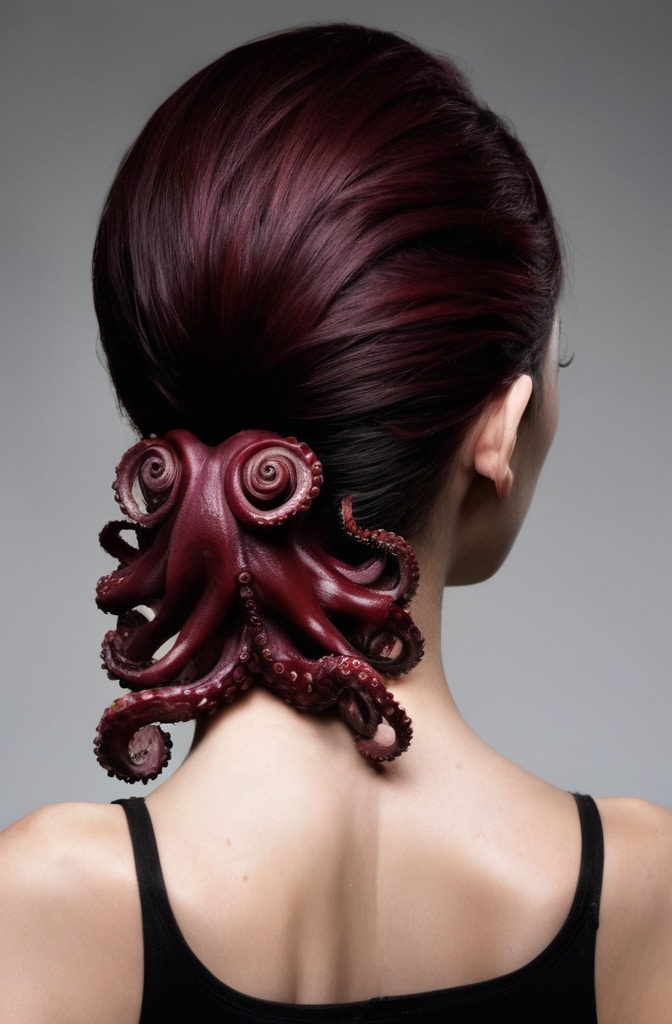
The aptly named octopus cut features a rounded, voluminous top with longer, “tentacle-like” pieces hanging below—creating a dramatic silhouette that adds incredible dimension to thin hair. This structural cut creates the appearance of thickness through clever weight distribution, with most of the volume concentrated at the crown. The disconnected layers work together to create a bold, editorial look that’s surprisingly wearable.
To style, apply a volumizing mousse to damp roots and blow-dry using a diffuser attachment for maximum lift at the crown. The beauty of this cut is in its distinct shape, which draws attention away from fine texture and focuses instead on the architectural quality of the style.
29. C-Shaped Cut

The C-shaped cut, characterized by its subtle C-curve when viewed from the side, creates natural volume through strategic layering. Unlike traditional layered cuts that can sometimes make thin hair look stringy, the C-shape maintains weight at the ends while adding movement throughout. This technique is particulary effective for those with fine, straight hair who struggle with flatness.
When styled with a round brush, the layers fall into a beautiful curved shape that frames the face and creates the illusion of thicker hair. The gentle curve adds bounce and movement that fine hair often lacks naturally. This style works on various lengths, from just below the chin to past the shoulders.
30. Hime Cut
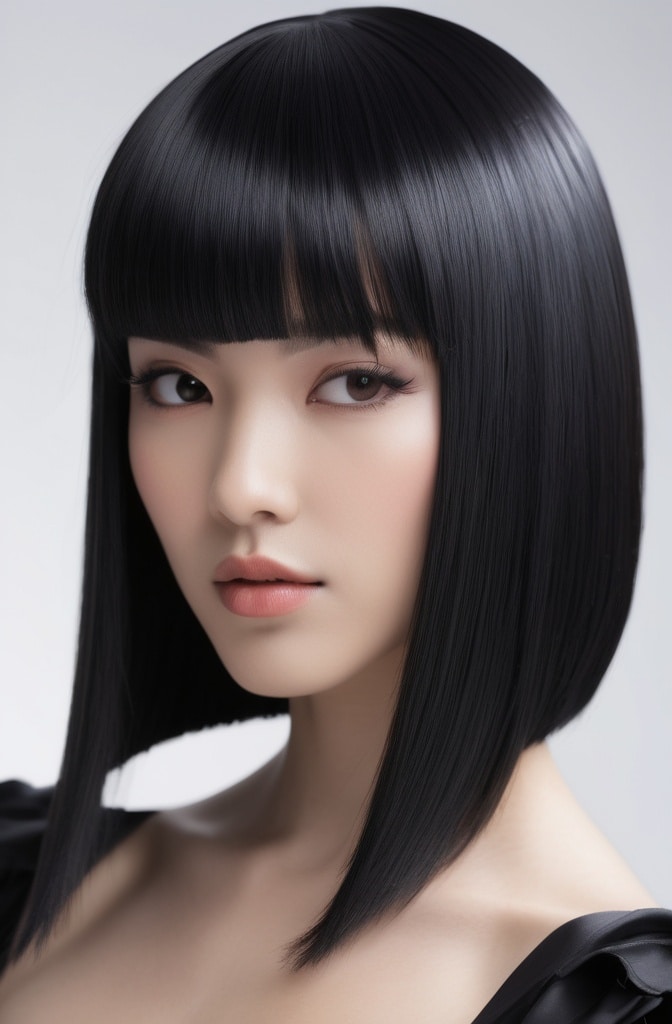
The Japanese-inspired Hime cut features straight-across bangs with long side sections and a blunt length throughout—a combination that creates striking structure perfect for thin hair. The geometric precision of this cut creates a bold statement while making hair appear thicker through its strong lines and distinctive shape. It’s an architectural approach to hairstyling that works beautifully for finer textures.
The contrast between the blunt bangs and the longer side sections creates visual interest that draws attention away from thinness. This style works best when kept sleek and straight to showcase its precise cutting technique. For those looking for something truly unique, the Hime cut offers both drama and the appearance of thickness.
31. Concave Bob
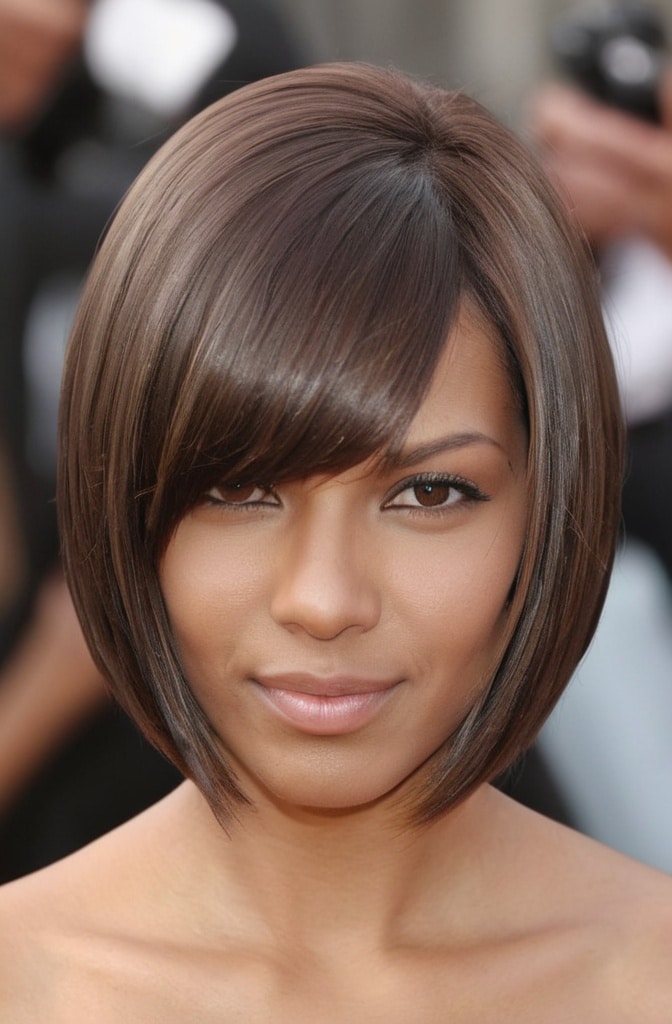
The concave bob shorter at the back and gradually longer toward the front creates natural volume through its clever shape alone. This architectural cut uses graduation to build weight exactly where thin hair needs it most, creating a silhouette that appears fuller than it actually is. The subtle angle provides lift at the back while maintaining length around the face.
What makes this style particular effective is how it concentrates hair where it’s most visible framing the face while removing excess weight from the back that could drag down fine strands. Style with a flat iron curved under slightly at the ends to enhance the distinctive concave shape that makes this bob so special.
32. Italian Bob

The Italian bob combines the sleekness of a classic bob with subtle, face-framing layers for a sophisticated look that adds dimension to thin hair. Hitting just below the chin with a slight A-line shape, this European-inspired cut creates volume through its careful cutting technique and precise length. The subtle graduation adds movement without sacrificing the strong perimeter that gives thin hair structure.
This style works wonders because it maintains weight at the ends while adding just enough layering to prevent flatness. I’ve seen it transform even the finest hair into something that appears significantly fuller. For authentic Italian vibes, style with a round brush for polished volume and finish with a shine spray for that characteristic glossy finish.
33. Waterfall Layers
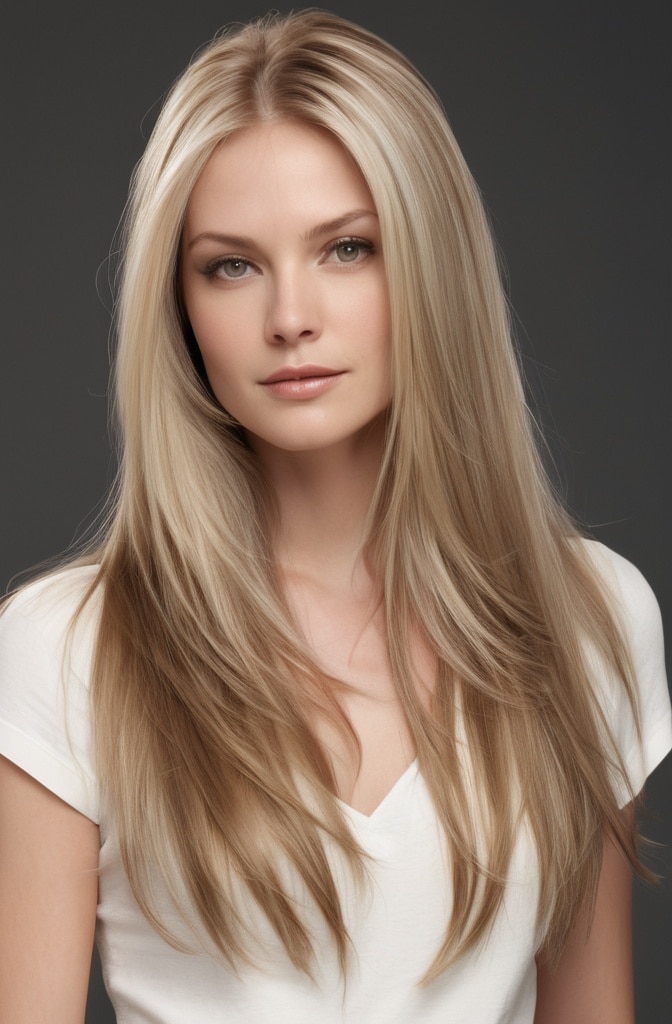
Waterfall layers feature a cascading effect where each layer flows seamlessly into the next, creating dimension and movement that’s perfect for thin hair. Unlike traditional layers that can sometimes create obvious weight disparities, waterfall layers maintain an organic connection throughout the cut, resulting in natural-looking volume that doesn’t sacrifice overall thickness.
This technique is especially effective because it adds internal movement while preserving the integrity of the outline shape. The layers are barely perceptable individually but work together to create a beautiful cascading effect that gives thin hair the appearance of fullness. Style with loose waves to enhance the waterfall effect and maximize the dimension this cutting technique creates.
34. Textured Clavicut
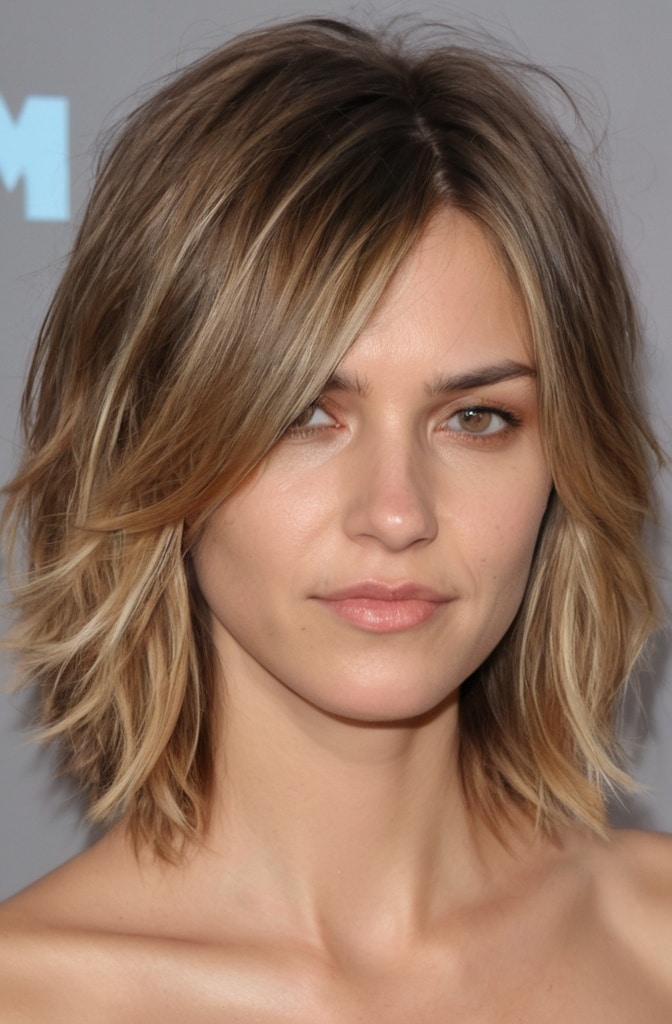
The clavicut hitting precisely at the collarbone with added texture throughout creates a modern, versatile option for thin hair. This length is ideal because it’s long enough to be pulled back but short enough to maintain volume without being weighed down. The added texture throughout gives dimension that makes fine hair appear thicker and more substantial.
What makes this cut work so well is the combination of the strategic length and the textured ends that create movement. The collarbone length serves as a natural shelf that gives hair a slight boost in volume. For maximum effect, style with a texturizing spray and scrunch gently to enhance the piece-y finish thats so flattering for fine hair.
35. Brushed-Out Curly Shag
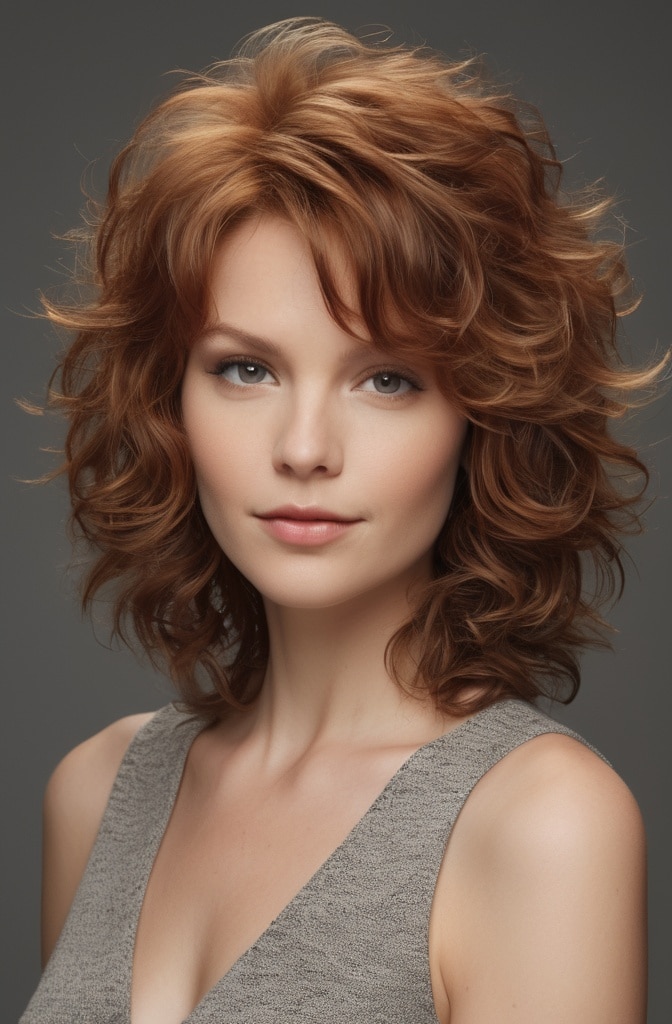
The brushed-out curly shag takes natural texture and maximizes it through strategic layering and a specific styling technique. Rather than defining individual curls, this style involves setting the hair with curlers or a curling iron, then gently brushing through to create voluminous, disco-inspired waves. The result is dramatically increased volume that makes thin hair look incredibly full.
This technique works amazingly well for fine hair because it creates artificial volume through the styling process rather than relying solely on natural thickness. The shag cutting technique adds to this effect with its face-framing layers and textured ends. Finish with a light-hold hairspray to maintain the volume without weighing down the style.
36. Beveled Bob
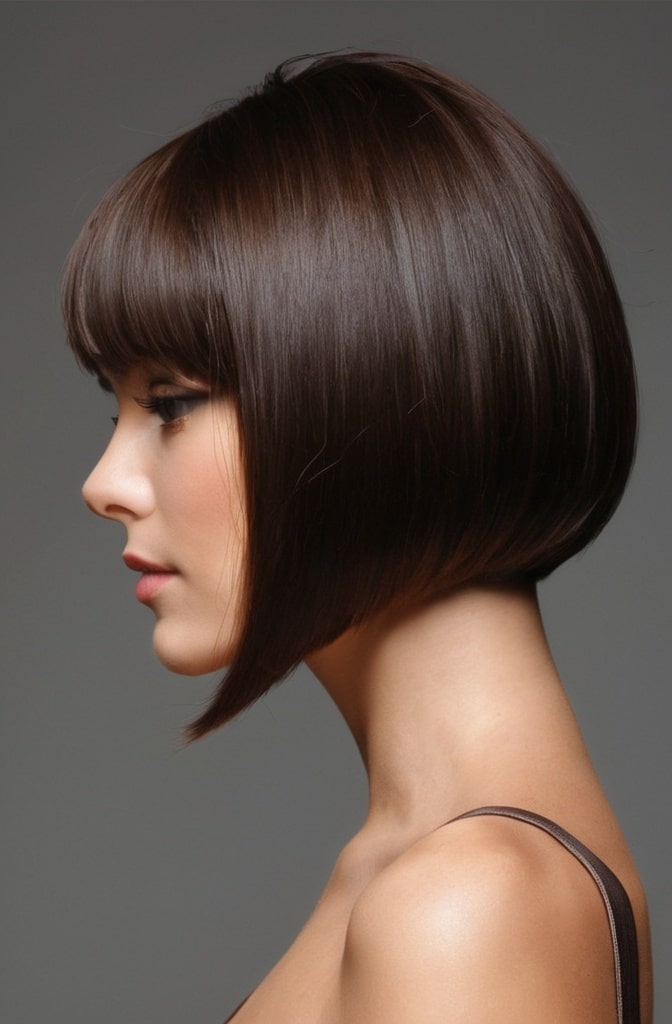
The beveled bob features ends that are cut at a slight angle inward, creating a subtle curved effect that adds bounce and volume to thin hair. This precisely cut style uses the angle of the cut to direct hair slightly under at the ends, creating natural movement and preventing the flat appearance that can plague fine hair. The beveled shape gives hair a natural lift that makes it appear thicker.
Unlike a completely blunt cut that can sometimes highlight thinness, the beveled technique creates softness while maintaining the strength of the overall shape. When blown out with a round brush, this cut takes on a beautiful curved silhouette that swings naturally with movement. It’s a subtle detail that makes a significant difference in how substantial thin hair appears.
37. Scandi Bob

The Scandinavian-inspired bob combines simplicity with structural precision for a minimalist look that works beautifully on thin hair. This clean, fuss-free style typically features a blunt cut with subtle face-framing layers and a length that hits between the chin and shoulders. The Scandi approach emphasizes quality over quantity, focusing on precise cutting techniques that make even fine hair look substantial.
What makes this bob unique is its understated elegance—it doesn’t rely on elaborate layering or texturizing, but rather on perfect proportion and placement. I’ve noticed my clients with finer hair particularly appreciate how this style makes their hair look healthier and more refined. Style with a flat brush for a smooth finish that showcases the precise cutting technique.
38. Twisted Lob
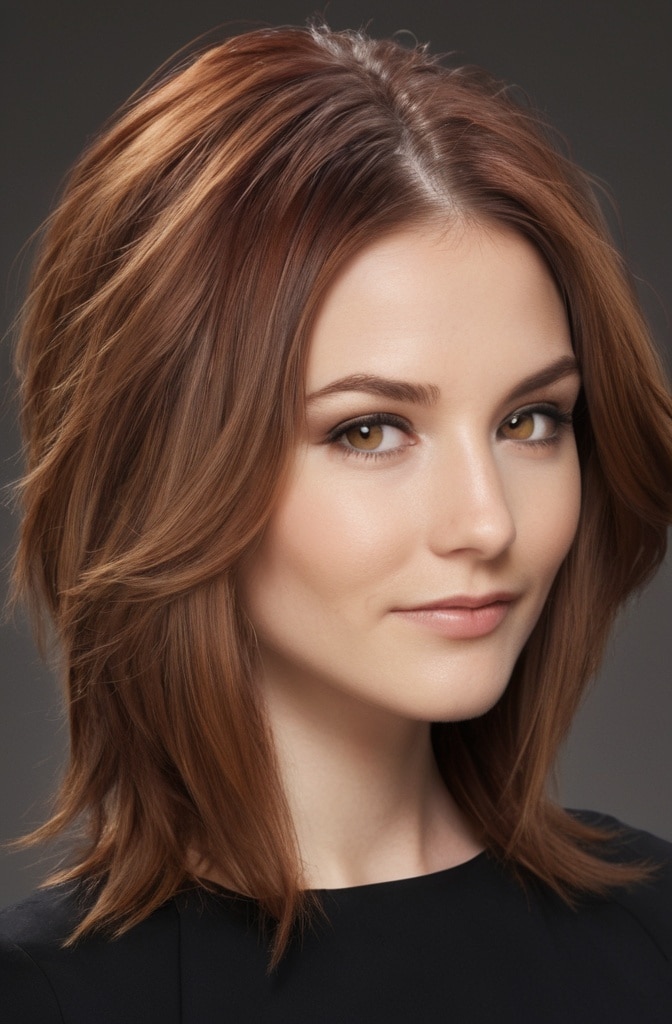
The twisted lob incorporates subtle twists throughout the mid-lengths and ends to create texture and dimension without traditional layers. This technique works by directing sections of hair in slightly different directions during cutting, creating natural movement that makes thin hair appear fuller. The resulting effect is organic texture that doesn’t rely heavily on product or styling.
This approach is genius for fine hair because it creates volume through the cutting technique itself rather than through additional products that might weigh hair down. When air-dried with a small amount of texture cream, the natural twists and turns throughout the cut become more pronounced, giving the appearance of thicker, more dimensional hair.
39. Bottleneck Bob

The bottleneck bob features a distinctive shape—narrower at the nape and gradually widening toward the ends, similar to the shape of a bottle. This architectural approach creates volume through its unique silhouette, concentrating hair where it creates the most impact. For thin hair, this strategic distribution of weight creates the illusion of fullness without relying on excessive layering.
What makes this cut so effective is how it maintains length and shape while creating a distinctive silhouette that draws attention to the cut itself rather than to the texture of the hair. The gradual widening toward the ends creates movement and bounce that’s particularly flattering for finer hair types. Style with a round brush for a polished finish that emphasizes the unique shape.
40. Razor-Cut Mixie

The “mixie” a mix between a pixie and a mullet becomes even more effective for thin hair when cut with a razor. This technique creates soft, feathered ends that add texture and movement while maintaining the edgy shape of the cut. The razor cutting method removes bulk in a way that creates natural texture rather than cleanly snipped ends, giving fine hair an airy, lightweight quality.
The combination of the short pixie elements with the longer sections at the back creates a contrast that makes hair appear fuller through structural variation. I’ve found that many of my clients with fine hair are surprised by how much natural volume this cut creates, particulary when enhanced with a texturizing product designed for fine hair.
41. Airy Fringe with Soft Layers

An ultra-light, wispy fringe paired with soft, barely-there layers creates ethereal volume perfect for thin hair. The key is keeping the fringe airy and disconnected from the rest of the cut, allowing it to move freely and create the appearance of fullness. The soft layers throughout add movement without removing too much weight from the overall style.
This combination works because it adds dimension at the most visible part—around the face—while maintaining length and movement throughout. The light, feathery quality of both the fringe and layers creates natural volume that doesn’t rely on heavy styling or products. This is an ideal option for those who prefer a low-maintenance approach to styling fine hair.
42. Deep-Parted Asymmetrical Cut
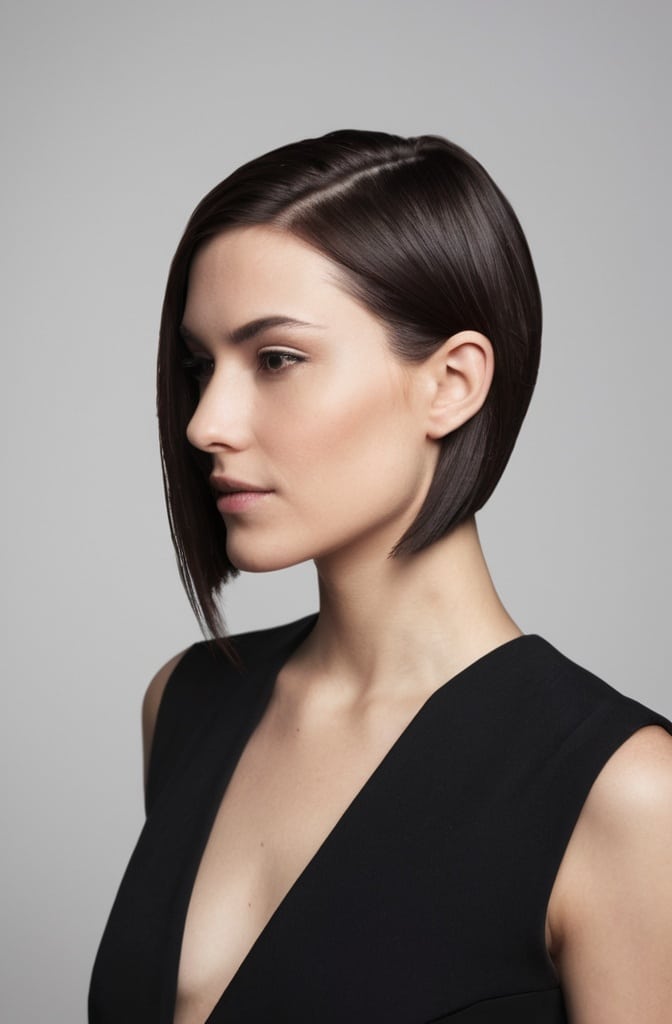
A dramatic side part paired with slightly asymmetrical lengths creates instant volume through opposition to the hair’s natural fall pattern. This technique lifts hair away from the scalp at the root, creating height and fullness that’s particularly beneficial for thin hair. The uneven lengths add to this effect by creating visual interest that distracts from any lack of density.
What makes this style so effective is how it utilizes directional styling to create volume. By training hair to fall opposite its natural growth pattern, you create natural lift that makes fine hair appear significantly fuller. Style with a volumizing mousse and blow-dry while directing hair away from its natural part for maximum height and body.
43. Box Bob
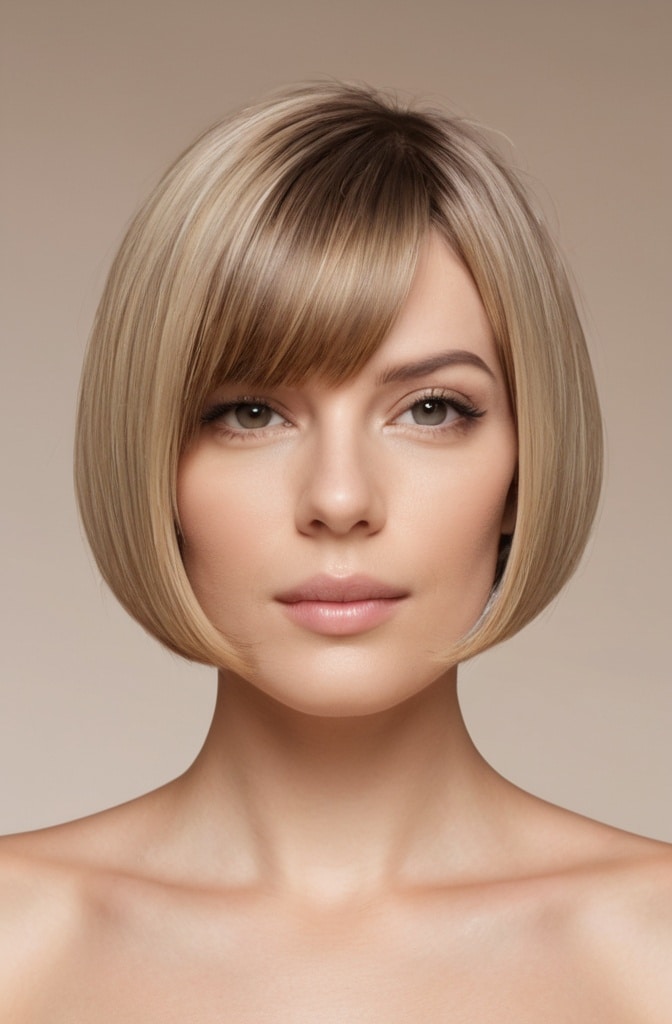
The box bob featuring a strong, squared-off shape with minimal layering creates structure that makes thin hair look instantly thicker. This geometric cut uses sharp lines and corners to create a bold silhouette that draws attention to the shape rather than to the texture of the hair. The precise cutting technique ensures that every strand contributes to the overall volume of the style.
This architectural approach works beautifully for straight, fine hair because it creates volume through shape alone. When styled with a flat brush for a smooth finish, this bob takes on a graphic quality that’s both modern and timeless. The strong perimeter creates the appearance of thickness at the ends where thin hair often appears most sparse.
44. Ribbon Layering Technique
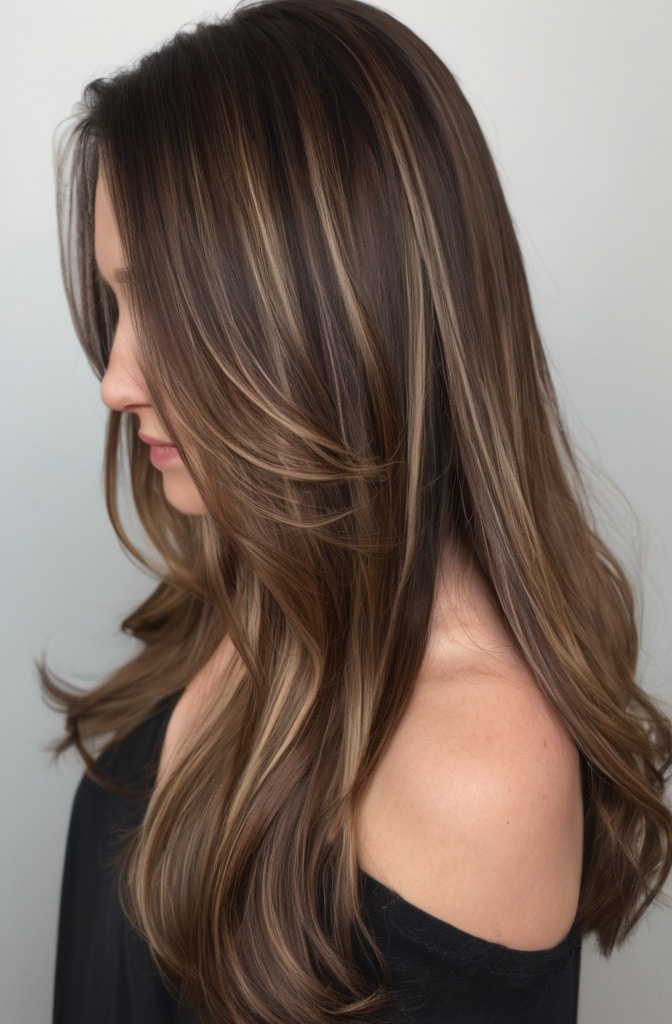
The ribbon layering technique—where hair is cut in ribbon-like sections that vary slightly in length—creates natural movement and dimension perfect for thin hair. Unlike traditional layering that can sometimes create obvious steps, ribbon layers flow seamlessly into one another, creating organic texture that makes hair appear fuller without sacrificing overall thickness.
This approach is particularly effective because it creates internal movement that gives hair a natural boost in volume. The varied lengths throughout create dimension that catches the light differently, adding visual thickness to fine strands. Style with a light texturizing spray and scrunch gently to enhance the ribbon-like movement throughout the cut.
45. Tapered Ends Bob
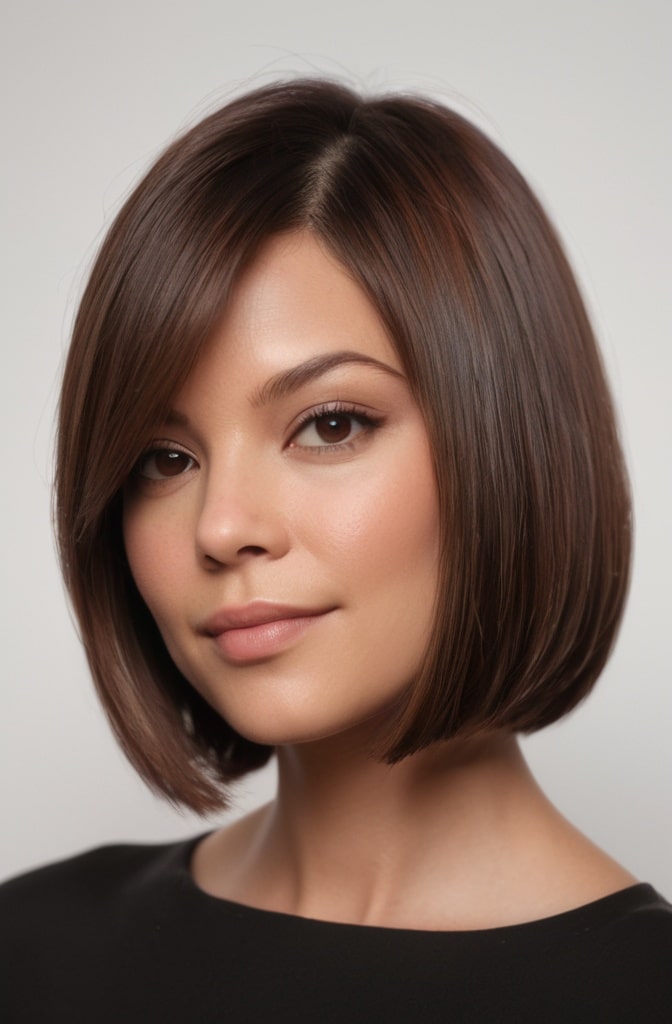
The tapered ends bob features a strong perimeter with ends that are subtly tapered rather than bluntly cut, creating movement without removing too much weight. This technique is perfect for thin hair because it preserves the appearance of thickness while preventing the stiff, helmet-like effect that can sometimes occur with completely blunt cuts on fine hair.
The subtle tapering of the ends creates soft movement that makes hair appear naturally voluminous rather than artificially thick. I’ve found this technique particulary useful for clients whose fine hair tends to stick together at the ends, as the tapering creates separation that adds dimension. Style with a round brush turning slightly under at the ends for a polished finish.
46. Invisible Layer Technique
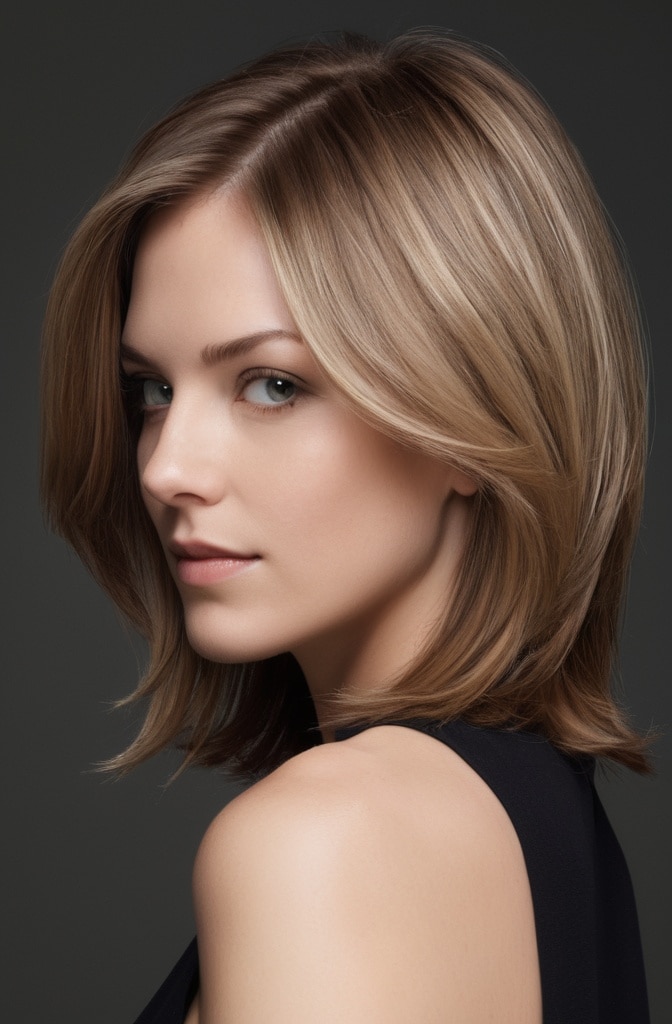
The invisible layer technique incorporates ultra-subtle layers that are virtually undetectable but create natural volume throughout the cut. This approach involves removing minimal weight from strategic points within the hair rather than creating obvious layering patterns. The result is hair that moves beautifully and appears thicker without looking obviously layered.
What makes this technique so perfect for thin hair is how it preserves overall length and weight while adding just enough internal texture to prevent flatness. When styled with a round brush, these invisible layers create natural lift and movement that makes fine hair look significantly fuller. It’s a subtle approach that yields impressive results for those wanting to maintain length while adding volume.
47. Disconnected Pixie

The disconnected pixie features longer lengths on top that are deliberately disconnected from the shorter sides and back, creating dramatic contrast that adds volume to thin hair. This technique concentrates hair where it creates the most impact—on top—while keeping the sides and back tight and clean. The distinctive disconnection between sections creates architectural interest that draws attention away from fine texture.
This style works amazingly well because it redistributes volume where it’s most visible and removes it where it’s not needed. The result is a bold, editorial look that makes fine hair appear significantly thicker through clever weight distribution. Style with a texturizing paste worked through the longer top section for piece-y definition that enhances the disconnected effect.
48. Blunt Collarbone Cut with Internal Texture

This precision cut hits exactly at the collarbone with a strong, blunt perimeter but incorporates invisible internal texturizing for movement without sacrificing the appearance of thickness. The combination creates the best of both worlds—the strength and solidity of a blunt cut with the movement and dimension of layering. This technique works particularly well for fine, straight hair.
The internal texturizing is key here—it’s concentrated within the cut rather than at the ends, preserving the strong outline while adding movement throughout. When styled with a round brush, this cut takes on beautiful dimension that makes thin hair look instantly thicker. It’s a sophisticated approach that offers both polish and natural-looking volume.
49. Face-Framing Curtain Layers

Beyond traditional curtain bangs, this technique incorporates longer, face-framing layers that create a curtain-like effect around the entire face. These strategic layers add volume where it’s most visible while maintaining length throughout the rest of the hair. For thin hair, this approach adds dimension without removing too much weight from the overall style.
The face-framing effect draws attention to your features rather than to the texture of your hair, creating a flattering frame that enhances both your face shape and your hair’s appearance. Style with a medium barrel curling iron, curling these face-framing sections away from the face to enhance the curtain-like effect thats so flattering and volumizing.
50. Modern Mullet for Fine Hair

The contemporary interpretation of the mullet has evolved into a sophisticated, textured style that works surprisingly well for thin hair. Today’s version features softer transitions between the shorter top and longer back, with plenty of texture throughout to create natural volume. The varied lengths create dimension that makes fine hair appear much fuller than it actually is.
What makes this style particulary effective for thin hair is how it distributes volume evenly rather than concentrating it in one area. The textured layers throughout create movement that gives fine hair a boost in apparent thickness. Style with a texturizing spray and scrunch to enhance the natural texture inherent in this modern mullet cut.
51. Origami Bob
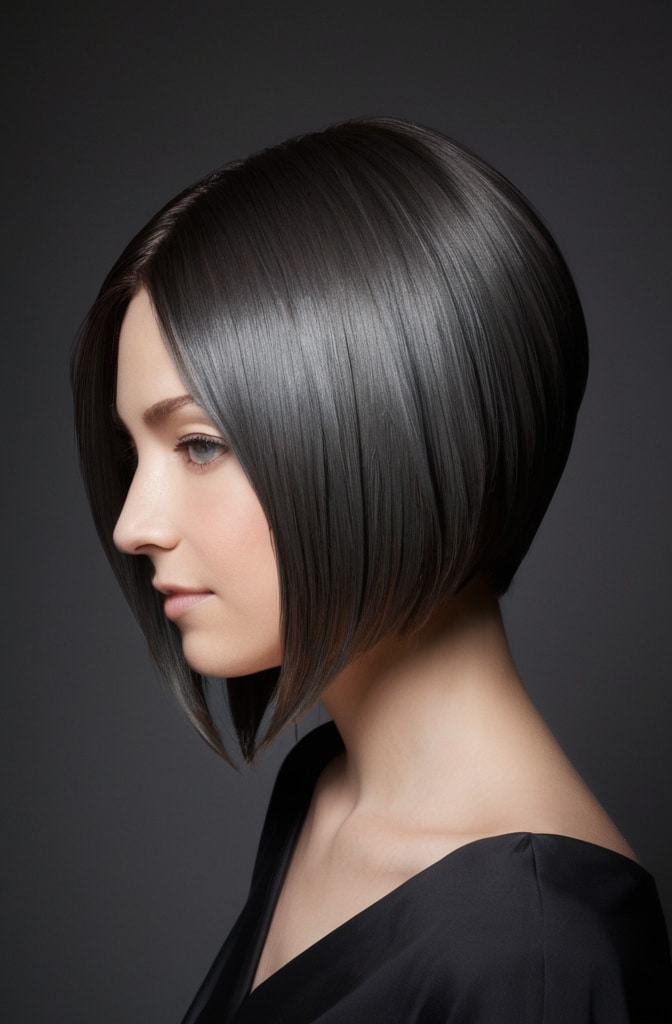
The origami bob draws inspiration from the Japanese paper-folding art, featuring precisely angled sections that create architectural dimension perfect for thin hair. Unlike traditional bobs that rely on curved lines, this cut incorporates deliberate angles and geometric shapes that build structure and create the illusion of thickness. The careful placement of these angular sections adds visual interest that draws attention away from any lack of density.
What makes this style truly unique is how it transforms fine hair into something sculptural through cutting technique alone. I’ve noticed clients with thin hair are often amazed at how this structural approach completely changes the appearance of their hair’s thickness. Style with a flat iron to emphasize the precise angles and geometric lines that make this bob so distinctive.
52. Calligraphy Cut
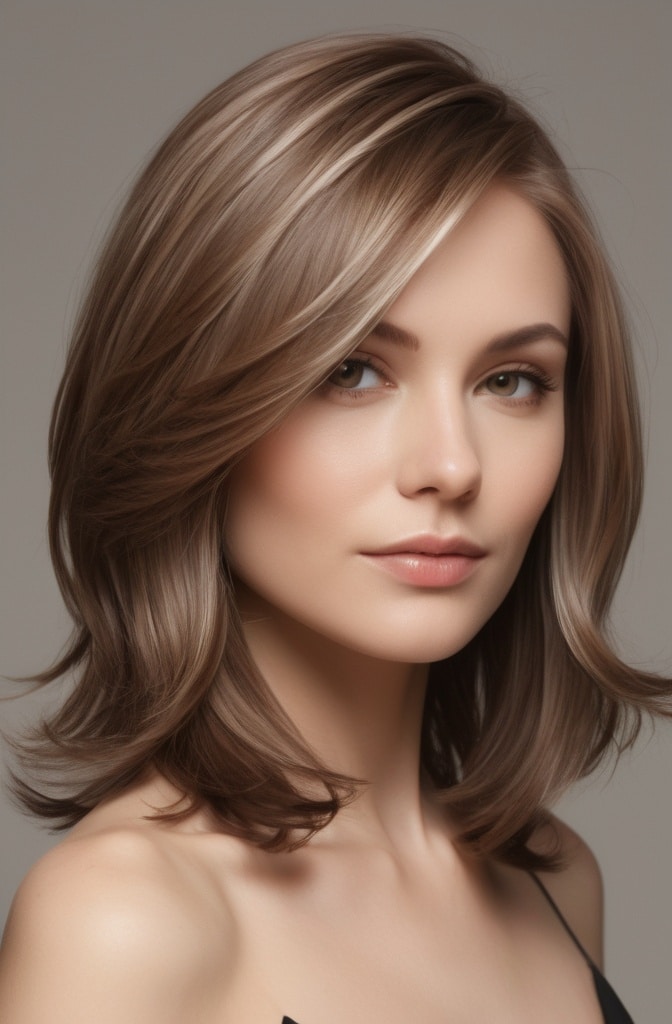
The calligraphy cut uses a specialized cutting tool that slices hair at a 21-degree angle, creating ends that move beautifully and appear naturally thicker. This innovative technique—named after the art of beautiful handwriting—cuts each strand with varying angles rather than straight across, resulting in hair that has significantly more volume and movement. For thin hair, this specialized approach can be truely transformative.
The angled cutting technique creates ends that don’t lie flat against each other, which naturally increases volume without relying on product or styling. When the hair moves, these precisely cut ends create dimension that makes fine hair appear much fuller. This is definately worth seeking out a stylist specifically trained in this cutting method for those struggling with flat, lifeless thin hair.
53. Paper Cut Bob
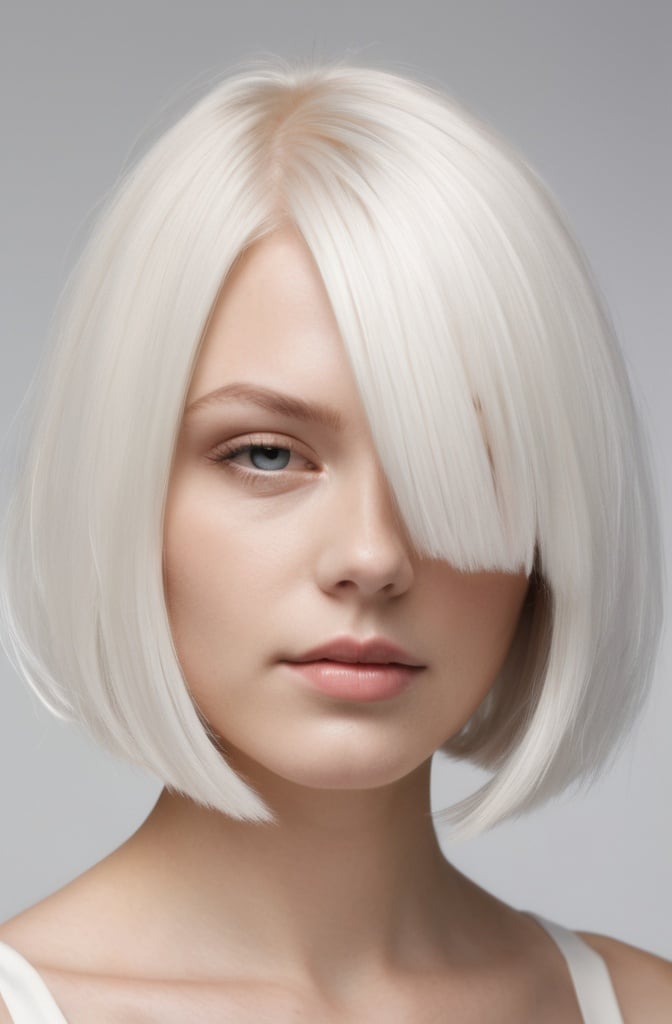
The paper cut bob uses a dry-cutting technique inspired by the precision of paper cutting, resulting in clean lines with subtle texture that’s ideal for thin hair. This approach involves cutting the hair when it’s completely dry, allowing the stylist to see exactly how each section falls naturally and cut accordingly. The result is a tailored, customized bob that works with your hair’s natural movement rather than against it.
What makes this technique particulary effective for fine hair is how it preserves weight while adding just enough texture to prevent flatness. The dry-cutting approach means that the stylist can see exactly where volume is needed and adjust the cutting technique accordingly. This bespoke approach results in a bob that maximizes your hair’s natural volume potential.
54. Floating Layers
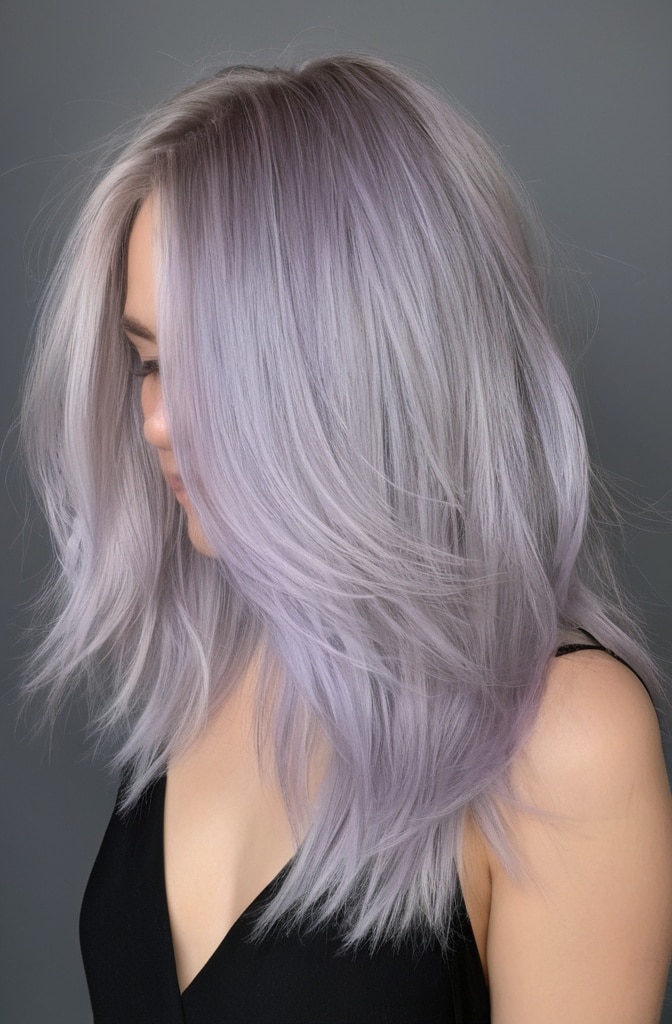
Floating layers are disconnected, shorter pieces that “float” above the base length, creating dimension and volume through contrast. Unlike traditional layering that blends seamlessly, floating layers are deliberately visible, creating texture and movement that’s particularly beneficial for thin hair. These strategic shorter pieces add lift where it’s needed most without removing too much overall weight.
This technique works wonders because it creates the appearance of thickness through targeted volume in specific areas rather than all over. The contrast between the floating layers and the base length creates visual interest that distracts from any lack of density. Style with a texturizing spray to enhance the separation between layers and maximize the volumizing effect.
55. Shadow Layering
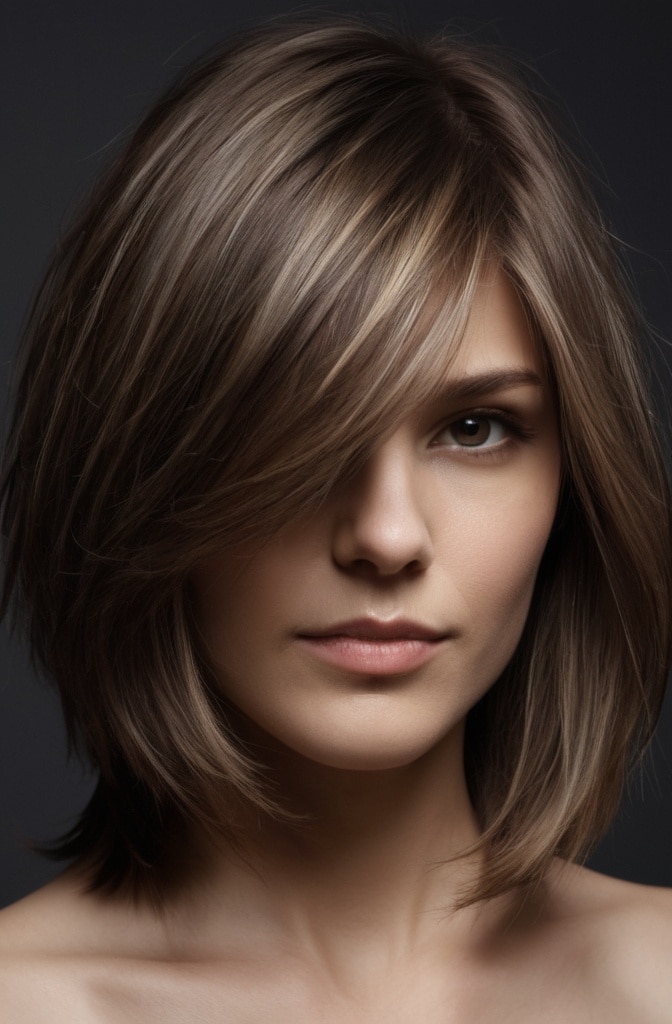
Shadow layering involves ultra-subtle, barely-there layers that create dimension through slight variations in length rather than obvious steps. This technique uses light and shadow principles to create the illusion of thickness, with minimal lengths removed to preserve overall weight and density. The result is hair that appears thicker through visual tricks rather than actual fullness.
What makes this approach ideal for thin hair is how it creates the appearance of dimension without sacrificing actual hair. The shadow effect comes from how light hits the slightly varied lengths, creating depth that one-length cuts often lack. This technique is perfect for those who want to maintain length while adding just enough movement to prevent fine hair from falling flat.
56. Negative Space Cut
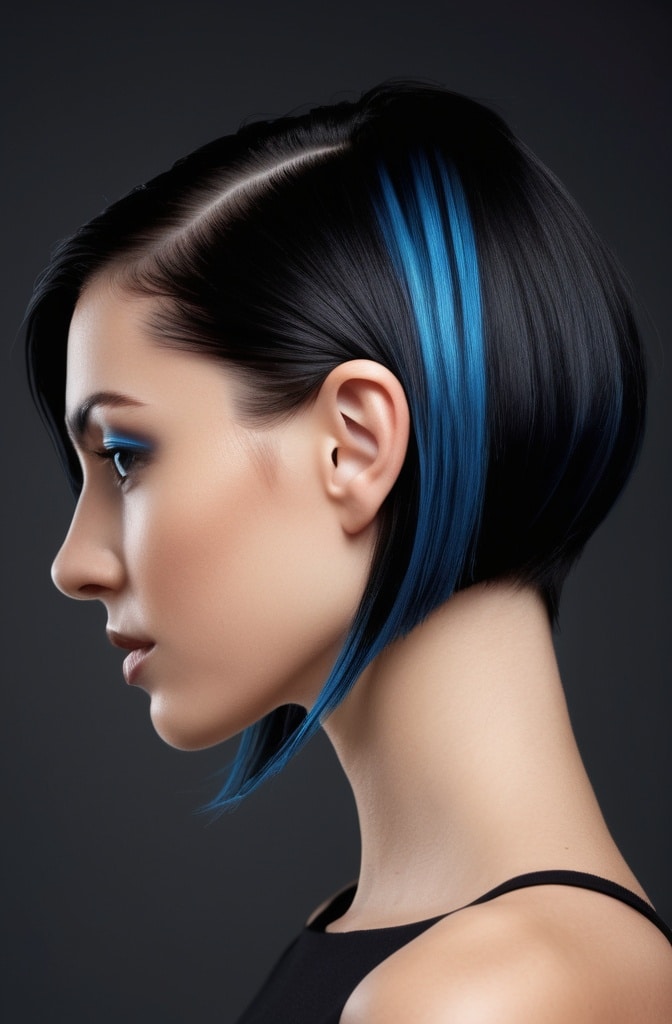
The negative space cut strategically removes weight from underneath while maintaining length on top, creating natural lift and volume through clever weight distribution. This architectural approach uses the principles of negative space in design—focusing on what’s removed rather than what remains—to create shape and dimension. For thin hair, this means removing bulk where it weighs hair down while preserving it where it creates impact.
I’ve found this technique particulary effective for clients with fine hair that tends to stick to the scalp. By removing strategic sections underneath, the remaining hair naturally lifts away from the head, creating volume without requiring excessive styling or products. It’s a structurel approach that works with gravity rather than against it.
57. Prism Cut
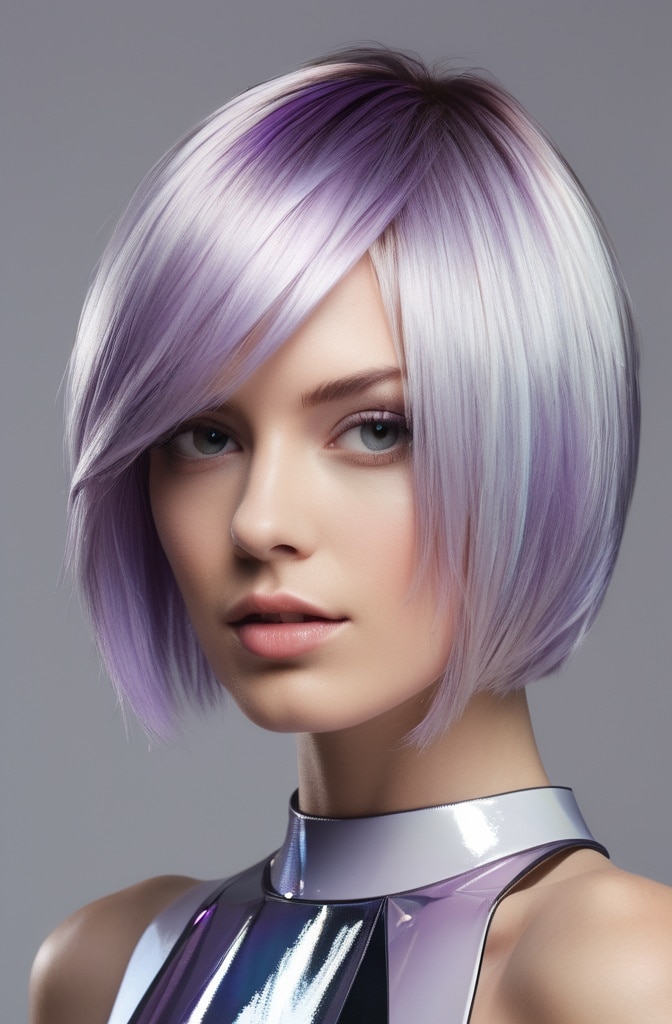
The prism cut incorporates varied angles throughout that catch and reflect light differently, creating dimension and the illusion of thickness through optical effects. Inspired by how prisms refract light, this cutting technique positions each section at slightly different angles to create natural movement and visual thickness. For thin hair, this means added dimension without relying solely on actual density.
The beauty of this technique is how it utilizes light to create the appearance of fullness—when light hits the varied angles throughout the cut, it creates natural highlights and shadows that add dimension. Style with a shine spray to enhance this light-reflecting quality and maximize the volumizing effect that makes this cut so effective for fine hair.
58. Micro-Layered Pixie
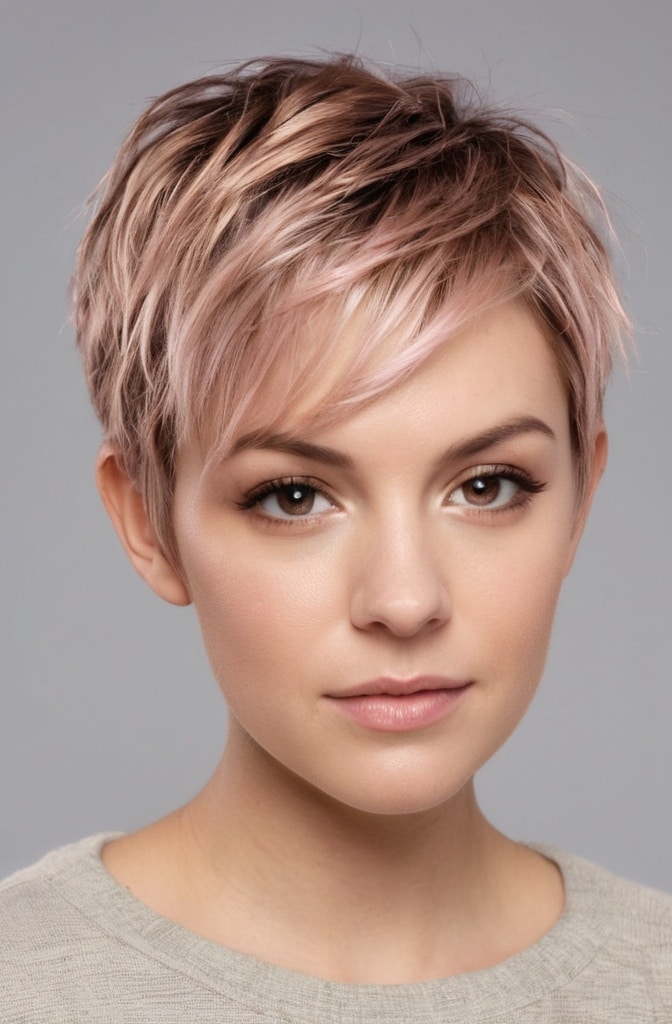
The micro-layered pixie features ultra-short, precise layers throughout that create natural texture and volume perfect for thin hair. Unlike traditional pixies that might incorporate longer pieces on top, this version uses consistent micro-layering throughout to create all-over texture that makes fine hair appear significantly fuller. The short length prevents hair from being weighed down while the micro-layers add dimension.
What makes this style particulary effective is how the micro-layers create natural lift at the root without requiring excessive styling. Each tiny layer contributes to the overall volume of the style, working together to create fullness that fine hair often lacks naturally. Style with a small amount of texturizing paste worked through with fingertips for piece-y definition that enhances the micro-layered effect.
59. Chandelier Layers
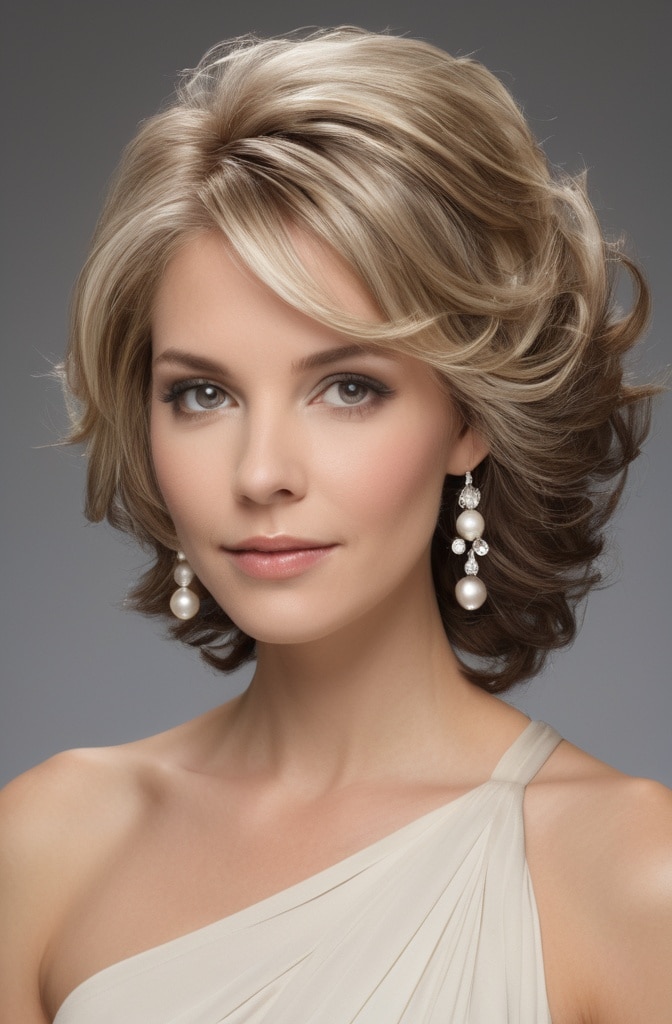
Chandelier layers feature longer pieces around the face that gradually cascade into shorter layers toward the back, creating a chandelier-like effect that adds dramatic dimension to thin hair. This face-framing technique concentrates volume around the face where it’s most noticeable while the graduated layers throughout add movement and prevent fine hair from falling flat against the head.
This approach works beautifully because it distributes volume strategically rather than evenly, creating the illusion of thickness through careful placement. The longer front sections maintain length and versatility while the shorter back creates natural lift. Style with a round brush, directing the front sections forward slightly to enhance the face-framing effect thats so flattering for thin hair.
60. Echo Cut
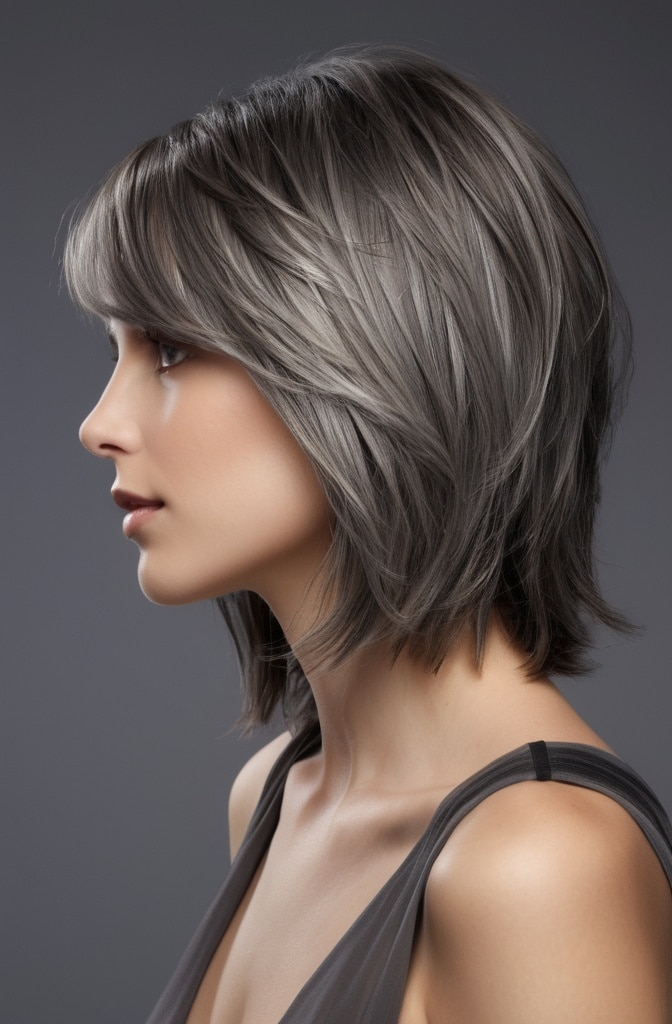
The echo cut uses a rhythmic pattern of slightly varied lengths that create natural movement and dimension, similar to how sound waves echo. This innovative technique incorporates subtle variations in length that work together to create natural bounce and volume each layer “echoes” the one before it in a harmonious pattern that adds dimension to thin hair without creating obvious steps or disconnection.
What makes this technique ideal for fine hair is how it creates natural movement through cutting technique alone rather than relying on product or styling. The rhythmic pattern of lengths creates built-in volume that makes thin hair appear significantly fuller. When styled with minimal product, these echo layers create natural movement that gives fine hair the appearance of thickness and dimension.
Conclusion
Thin hair is not a limitation but rather an opportunity to explore creative cutting techniques and styling approaches that enhance your natural texture. Throughout this comprehensive guide covering 60 unique hairstyles, we’ve seen how the right cut can transform fine strands into voluminous, dynamic styles that turn heads for all the right reasons.
The most successful hairstyles for thin hair share several key principles. Strategic layering whether through invisible layers, shadow techniques, or geometric approaches creates dimension without sacrificing overall weight. Precision cutting methods like the sliced bob, calligraphy cut, and origami-inspired techniques build structure that fine hair often lacks naturally. Meanwhile, thoughtful weight distribution ensures volume is concentrated where it matters most, creating the illusion of thickness through clever optical tricks rather than actual density.
